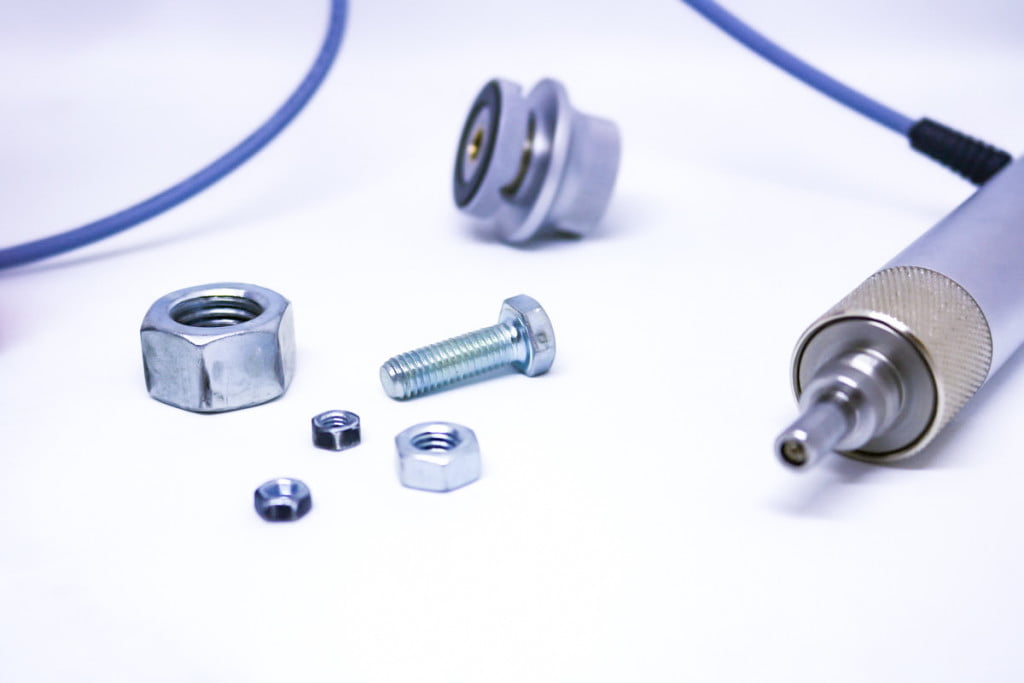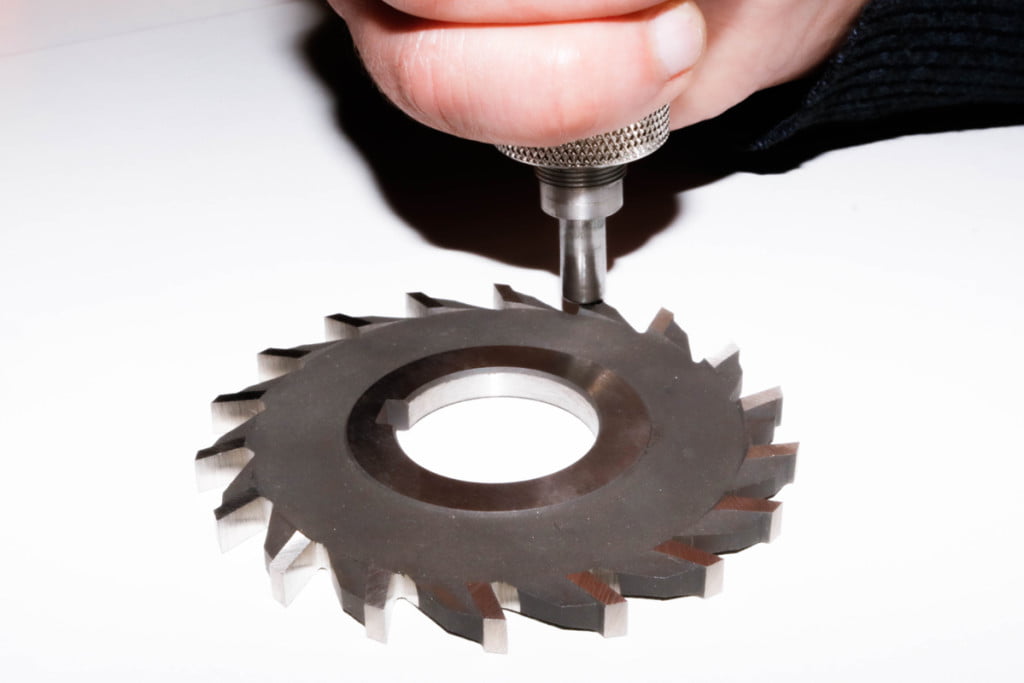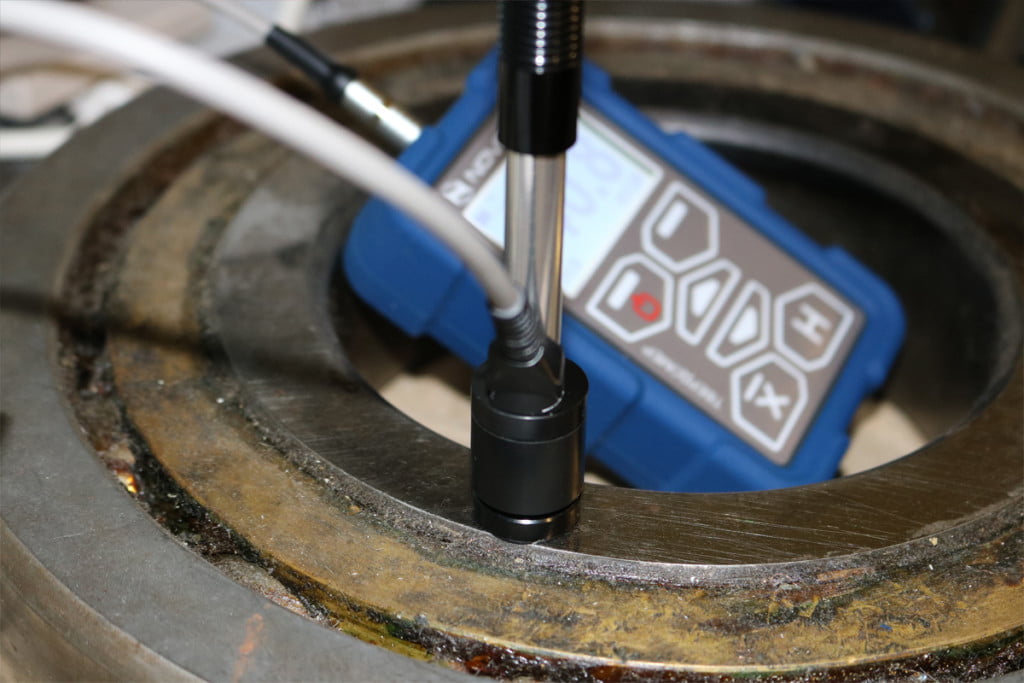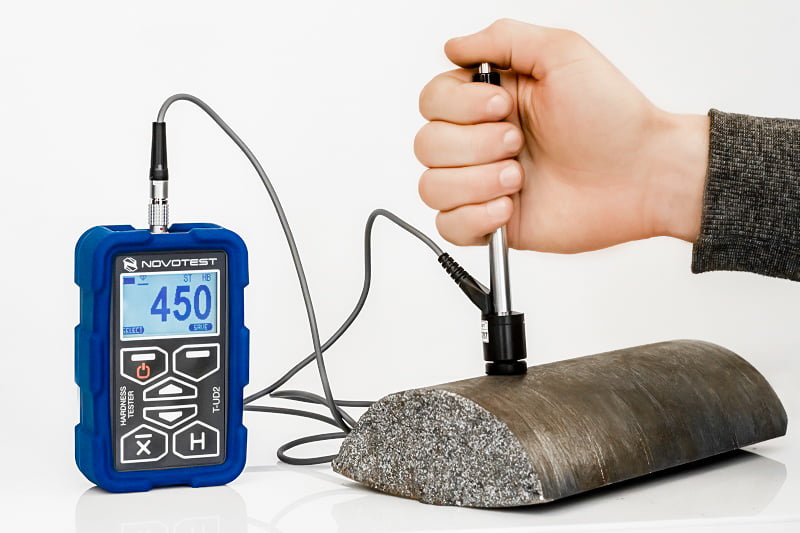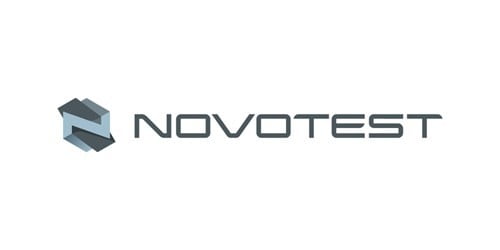NOVOTEST T-UD2 Combined Hardness Tester
Combined Hardness Tester NOVOTEST T-UD2 is designed for rapid non-destructive hardness testing of:
- metals and alloys on standardized hardness scales
- metals with different properties from steel (for example, non-ferrous metals, alloys, cast iron, etc.) with additional scales for calibration
- use the scale of tensile strength (Rm) for determining the tensile strength of carbon steel products pearlitic by automatically converting from Brinell (HB) hardness scale.
Device implements 2 methods of testing: rebound (Leeb) and ultrasonic contact impedance (UCI). The combination of both methods allows user to test all range of metal products.
UCI method for the hardness testing
The UCI hardness measuring method complies to ASTM A1038.
The ultrasonic contact impedance (UCI) probe is purposed to be used for hardness measuring in the case of the testing area minimal thickness (from 1 mm), objects of complex surface shape, and for measuring surface hardened layers hardness.
This method is very fast and easy: place the probe on the tested object surface, press the probe with the required effort to the surface and save the hardness value, shown on the display of the device. Small size diamond indenter allows measuring hardness value of all items, which are thicker than 1 mm. The UCI method of hardness testing is the least destructive because the hardness tester NOVOTEST T-UD2 with UCI probe leaves much smaller prints (imprints) than the majority of bench hardness tester would. That’s why a portable hardness tester with UCI probe is the best choice.
Leeb method for the hardness testing
The Leeb hardness measuring method complies to ASTM A956.
The Leeb probe (D type) is used for hardness measuring of massive objects (more than 5 kg, and more than 10 mm) and made of steels non-ferrous metals, cast irons, coarse-grained materials, e.t.c. Also, Leeb method perfectly complements with UCI hardness measuring method when UCI method is not applied.
This method is very fast and easy: place the probe on tested object vertically to the object surface, push the probe to charge the spring, press the button on the top of the probe to make measurement and save the hardness value, shown on the display. For the Leeb measuring method, NOVOTEST-UD2 automatically calculates hardness for a wide range of materials, like steel, stainless steel, cast iron, bronze, aluminum.
The combined hardness tester is the most universal, needs no recalibration, and is fully operational “out of the box”.
- Advantages:
– 2 removable probes: ultrasonic contact impedance (UCI) and dynamic, rebound (Leeb)
– There are no restrictions for hardness testing (by weight, configuration, structure, degree of mechanical and thermal treatment, etc.)
– To evaluate changes in the hardness of the hardened layer depth articles and the effect of surface stress
– Wide range of hardness value
– Convenience and ease in operation
– Minimum number of imprints
– Graphical display with backlight
– Automatic recognition of probe
– Control of the batteries
– Extended temperature range (cold-resistant, down to -20°C)
– Device has internal memory and allows user to connect with PC.
Download the brochure


